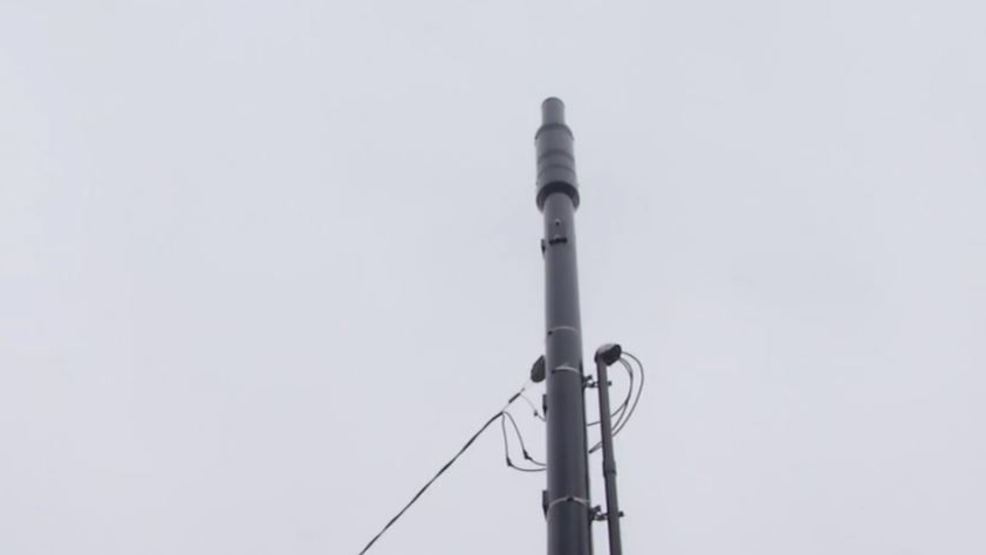Very best safest distance from the 5G cell Structure?

If you've ever wandered through a town you might have noticed tiny mini 5G cell towers on the poles of street lights. They appear like tiny boxes, but they're actually broadcasting wireless signals from mobile providers to your phone.
They are replacing larger, purpose-built cell towers. While they're not as noticeable however, they could cause issues for users.
It is the Federal Communications Commission's Radiation Exposure Thresholds
The FCC's Radiation Exposure Thresholds determine the maximum amount of time a person can be exposed to electromagnetic energy generated by wireless devices. what is a safe distance from a 5g cell tower for exposure are based on research that show that RF energy could be harmful to human health.
The specific absorption rate (SAR) is a measure of the radiofrequency energy taken up by tissues. It's usually 1.6 Watts per kilogram spread over a gram of tissue.
However, because 5g transmits at higher frequencies this could be able to increase the intensity of energy on the skin and other exposed body areas. This could lead to a wide range of potential harms, including exacerbated development of skin diseases such as dermatitis and skin cancer and cataracts.
Due to the possible harmful effects of radiation from 5G, PSU has chosen to establish a general, localized power density limit of 4 mW/cm2 based on the average on 1cm2, and never exceeding 30 minutes for all 5G services at 3000 GHz. This localized limit is in accordance with the maximum spatial-average SAR of 1.6 W/kg, averaged over one g of tissue at 6 GHz.
The FCC's Maximum Exposure Thresholds

If you've ever operated a cell phone, you probably know that the safest distance from the tower is at least 400 meters away. This is due to the transmitting power of a cell tower increases dramatically the further away the tower is.
While this sounds like an ideal idea, the reality is that people who live close to towers may actually be more susceptible to health problems. For instance, a 2014 study in India found that residents who lived within 50 meters of cell towers had much more health problems than those who lived farther distance from them.
But, the study found that people who moved into areas farther away from cell towers noticed their symptoms improve within a few days. Studies have also shown that exposure to high levels of radiofrequency electromagnetic fields (EMFs) can lead to brain tumors, cancers, and other health problems.
This is because RF radiation, used in wireless communications, may be absorbed by the body's outer layer, the skin. It is vital to be aware of this since the skin serves as a barrier to protect against mechanical injury, infection caused by pathogenic microorganisms and entry of toxic substances. Additionally, it is the most important organ in the human body, and is accountable for keeping the integrity of the other organs.
The FCC's Minimum Exposure Thresholds
The FCC's Minimum Exposure Thresholds rely on several assumptions that are not supported by scientific research. what is a safe distance from a cell tower include the erroneous assumption that short-term exposures to RF radiation are safe because of the minimal radiation penetration in the human body (i.e. the heating of tissues).
The assumption is also ignoring the greater penetration of ELF parts of modulated RF signals and the consequences on the body of short bursts from pulsed RF waves. These assumptions are not in line with the current understanding of biological effects of RF radiation. Therefore, they should not be used for health protective exposure guidelines.
In addition to that, ICNIRP and FCC are limiting their radiation limits for local peak SARs based on the maximum spatial specific absorption rate (psSAR) that is an inadequate dosimetric tool to determine the degree of exposure to RF radiation. In particular it is inconclusive for frequencies that exceed 6 GHz. In addition, psSAR is not been evaluated for RF radiation that is exposed to other agents of the environment such as sunlight. In what is a safe distance from a cell tower of interactions, RF radiations with different agents in the environment could result in antagonistic or synergistic impacts. This could result in an increased risk of adverse health consequences. For example, co-exposure to RF radiation along with exposure to sunlight can cause an increase in the incidence of developing skin cancer, as well as aggravate other skin conditions like acne.
